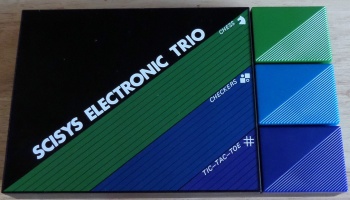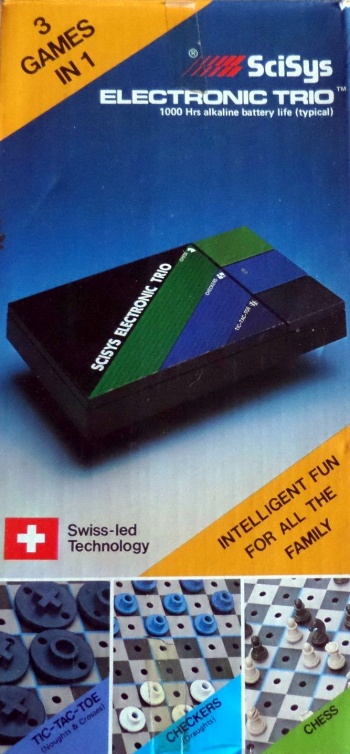SciSys Electronic Trio: Unterschied zwischen den Versionen
Erscheinungsbild
Keine Bearbeitungszusammenfassung |
Keine Bearbeitungszusammenfassung |
||
| Zeile 29: | Zeile 29: | ||
| Infos =<br /> | | Infos =<br /> | ||
[[Bild:trio1.jpg|left|thumb|350px|Box]] | [[Bild:trio1.jpg|left|thumb|350px|Box]] | ||
<html><iframe width="560" height="315" src="https://www.youtube-nocookie.com/embed/35ZyCMIJE4Q?si=t2z2aig_J9kI88D4" title="YouTube video player" frameborder="0" allow="accelerometer; autoplay; clipboard-write; encrypted-media; gyroscope; picture-in-picture; web-share" allowfullscreen></iframe></html> | |||
}} | }} | ||
|} | |} | ||
Version vom 21. November 2023, 17:55 Uhr
| SciSys Electronic Trio | |||
|---|---|---|---|
 |
|||
| Hersteller | SciSys | ||
| Markteinführung | 1985 | ||
| CElo | |||
| Programmierer | Kaplan, Julio & Craig Barnes | ||
| Prozessor | Takt | RAM | ROM |
| Hitachi HD44868 (singlechip) | 0,6 MHz | 80 Byte | 5 KB |
| Rechentiefe | BT-2450 | BT-2630 | Colditz |
| - | - | - | |
| Bibliothek | - | ||
| Display | |||
| Spielstufen | 8 | ||
| Zugeingabe | Stecksensorbrett | ||
| Zugausgabe | 16 Rand LEDs | ||
| Einführungspreis | 169 DM | ||
| Prozessortyp | 4 Bit | ||
| Stromversorgung | Batterie (bis 1000 Stunden) | ||
| Maße | 19.7 x 11.8 x 3.9 cm, Schachbrett 8.8 x 8.8 cm, Königshöhe 0.9 cm | ||
| Verwandt | |||
| Sonstiges | |||
| Drei Spiele in einem Gerät: Schach, Dame, Tic-Tac-Toe | |||
| Infos |
|---|

|
